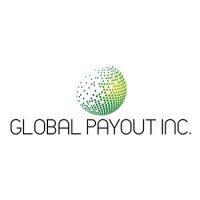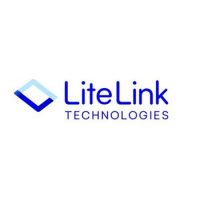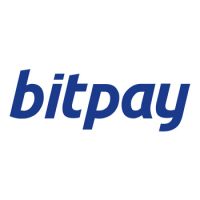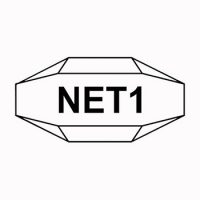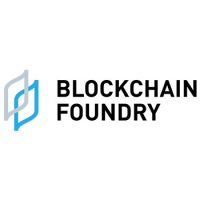Blockchain
Quantum Announces Nomination of Additional Director and Proposed Implementation of Changes in Accordance with New TSXV CPC Policy
Calgary, Alberta–(Newsfile Corp. – January 29, 2021) – Quantum Blockchain Technologies Ltd. (TSXV: QBC.P) (the “Corporation” or “Quantum“) is pleased to announce the nomination of Robert J. Quinn to the Corporation’s Board of Directors and its intention to implement (subject to shareholder approval) certain amendments to avail itself of changes arising from the TSX Venture Exchange’s amended Policy 2.4 – Capital Pool Companies that came into effect on January 1, 2021 (the “New CPC Policy“).
Under the New CPC Policy, an existing Capital Pool Company (“CPC“) can implement some changes under the New CPC Policy without shareholder approval (see “Other Changes“, below), but certain changes require specific disinterested shareholder approval. Further to this, the Corporation will be seeking such approval at its upcoming annual general and special meeting of shareholders scheduled to be held on February 26, 2021 (the “Meeting“), for the following matters: (i) to amend the Corporation’s Stock Option Plan to become a “10% rolling” plan prior to the Corporation completing a Qualifying Transaction; (ii) to remove the consequences of failing to complete a Qualifying Transaction within 24 months of the date the Corporation’s Common Shares became listed on the TSX Venture Exchange (the “TSXV”); and (iii) to enter into a new escrow agreement in the form adopted by the for CPCs on January 1, 20201 to supersede the Corporation’s existing escrow agreement.
The proposed amendments are described in further detail below.
Amendments to the Option Plan
The New CPC Policy permits the Corporation to adopt a “10% rolling stock option plan”, such that the total number of Common Shares that may be reserved for issuance pursuant to options under the Plan may not exceed 10% of the Common Shares issued and outstanding at the date of grant. The Corporation has adopted an incentive stock option plan (the “Current Plan“) that allows the Corporation to issue options to purchase up to 10% of the Corporation’s issued and outstanding Common Shares, provided that, until the completion of a Qualifying Transaction, the number of Common Shares reserved for issuance shall not exceed 500,000. The 500,000-share limitation in the Current Plan was due to the TSXV’s requirement under the version of Policy 2.4 that existed prior to January 1, 2021 (the “Former Policy“) that shares issued under a stock option plan of a CPC prior to the completion of a Qualifying Transaction could not exceed 10% of the shares issued and outstanding upon completion of the Corporation’s initial public offering. Under the New CPC Policy, the 500,000-share limitation would no longer be required.
At the Meeting, the Corporation will seek the approval from disinterested shareholders to adopt a new stock option plan that differs from the Current Plan only in that the 500,000-share limitation would be removed.
Removal of the Consequences of Failing to Complete a Qualifying Transaction within 24 Months of Listing
Under the Former Policy, there were certain consequences if a Qualifying Transaction is not completed within 24 months of the date the Corporation’s Common Shares became listed on the TSXV. These consequences include a potential for Shares to be delisted or suspended, or, subject to the approval of the majority of the Corporation’s shareholders, transferring Shares to list on the NEX and cancelling certain seed shares. Under the New CPCP Policy, these consequences will be removed provided the Corporation obtains disinterested shareholder approval to do so.
At the Meeting, the Corporation will seek the approval from disinterested shareholders to approve the removal of such consequences.
Amendments to the Escrow Agreement
In compliance with the Former Policy, the Corporation has entered into an escrow agreement with certain of its shareholders and with Alliance Trust Company pursuant to which 10% of the escrowed shares will be released from escrow on the issuance by the TSXV of a final bulletin in respect of the Corporation’s Qualifying Transaction (the “Initial Release“) and an additional 15% will be released on the dates 6 months, 12 months, 18 months, 24 months, 30 months and 36 months following the Initial Release. The escrow agreement also provides that all shares acquired on exercise of stock options prior to the completion of a Qualifying Transaction must also be deposited in escrow and will be subject to escrow until the Qualifying Transaction is completed.
Under the New CPC Policy, the Corporation’s escrowed securities would be subject to a different escrow release schedule whereby 25% of the escrowed securities would be released from escrow on the Initial Release and 25% of the escrowed securities would be released from escrow on each of the 6, 12 and 18 months following such date. The New CPC Policy also provides that (i) all options granted prior to the date the TSXV issues a final bulletin for the Corporation’s Qualifying Transaction and all Common Shares that were issued upon exercise of such options prior to such date will be released from escrow on such date, other than options that (a) were granted prior to the Corporation’s Initial Public Offering (“IPO“) with an exercise price that is less than the issue price of the Common Shares issued in the IPO and (b) any Common Shares that were issued pursuant to the exercise of such options, which will be released from escrow in accordance with the schedule set out above.
The Exchange has adopted a new form of escrow agreement for CPCs on January 1, 2021 (the “New Escrow Agreement“) that reflects the policies of the New CPC Policy.
At the Meeting, the Corporation will seek the approval from disinterested shareholders to enter into a new escrow agreement in the same form as the New Escrow Agreement to amend, replace and supersede the Corporation’s current escrow agreement.
Other Changes
Under the New CPC Policy, the Corporation is permitted to implement certain changes from the Former Policy without obtaining shareholder approval including, but not limited to: (i) increasing the maximum aggregate gross proceeds to the treasury that the Corporation can raise from the issuance of shares under an IPO, as seed shares and by private placement to the new maximum of $10,000,000, rather than $5,000,000 which was the limit under the Former Policy; (ii) removing the restriction which provided that no more than the lesser of 30% of the gross proceeds from the sale of securities issued by the Corporation and $210,000 may be used for purposes other than identifying and evaluating assets or businesses and obtaining shareholder approval for a proposed Qualifying Transaction, and implementing the restrictions on the permitted use of proceeds and prohibited payments under the New CPC Policy, under which reasonable general and administrative expenses not exceeding $3,000 per month are permitted; (iii) removing the restriction on the Corporation issuing new agent’s options in connection with a private placement; and (iv) removing the restriction such that now one person has the ability to act as the chief executive officer, chief financial officer and corporate secretary of the Corporation at the same time. The Corporation intends to avail itself of the foregoing if, as and when applicable.
Nomination of Robert J. Quinn
The Board of Directors of the Corporation currently consists of Keith J. Erickson, Roger M. Jewett and Johannes J. Kingma. At the Meeting, Management will propose the re-election of Messrs. Erickson, Jewett and Kingma as directors of the Corporation and will also propose the election of Robert J. Quinn to the Board. The addition of Mr. Quinn to the Corporation’s Board of Directors is subject to the approval of the TSXV.
Mr. Quinn is an independent businessman with over 40 years of diverse board, management, and legal international mining industry experience. He has extensive corporate governance, environmental, transactional, M&A, financing, contract, development, compliance and litigation experience with companies developing and operating numerous mines and conducting exploration programs internationally.
He was the General Counsel of Battle Mountain Gold Company (NYSE, S&P 500) for 12 years during which time the company went from operating one mine in Nevada to developing and operating several mines internationally. He has served on the boards of numerous other public companies, including as the Chairman of the Boards of four TSX and TSXV listed mining development and operating companies. More recently, he has been involved in the start-up and financing of Canadian TSXV listed junior mining companies, mostly focused on the Golden Triangle area of northwest British Columbia.
Mr. Quinn holds a Juris Doctor degree from the University of Denver School of Law (1981) and a Bachelor’s degree of Business Administration from the University of Denver (1978).
About Quantum
The Corporation is a capital pool company pursuant to Policy 2.4 of the TSXV. Except as specifically contemplated in such policy, until the completion of its Qualifying Transaction, the Corporation will not carry on business, other than the identification and evaluation of companies, businesses or assets with a view to completing a proposed Qualifying Transaction. Investors are cautioned that trading in the securities of a CPC is considered highly speculative.
As previously disclosed, Quantum has entered into a non-binding letter of intent dated July 25, 2020 with Ocumetics Technology Corp., as amended by amendments dated December 15, 2020 and December 29, 2020, to complete a business combination that would, if approved by the TSXV, comprise Quantum’s Qualifying Transaction. Completion of the business combination is subject to a number of conditions including, but not limited to, the approval of the TSXV.
Trading of Quantum Shares
Pursuant to the policies of the TSXV, trading of the shares of Quantum has been halted on the TSXV and will remain halted until the conditions of the TSXV for the resumption of trading have been met.
FOR FURTHER INFORMATION, PLEASE CONTACT:
Roger Jewett, CA
Director
(403) 650-7718
Neither TSX Venture Exchange nor its Regulation Services Provider (as that term is defined in policies of the TSX Venture Exchange) accepts responsibility for the adequacy or accuracy of this release.
Forward Looking Statements
This press release contains forward-looking statements which reflect management’s expectations regarding future growth, results of operations, performance and business prospects of the Corporation. These forward-looking statements may relate to, among other things, the approval of disinterested shareholders of matters under the New CPC Policy and the election of directors at the annual general and special shareholder meeting, the completion of a business combination with Ocumetics Technology Corp., the future business of the Corporation, forecasts or expectations regarding business outlook for the Corporation, and may also include other statements that are predictive in nature, or that depend upon or refer to future events or conditions, and can generally be identified by words such as “may”, “will”, “expects”, “anticipates”, “intends”, “plans”, “believes”, “estimates”, “guidance” or similar expressions. In addition, any statements that refer to expectations, projections or other characterizations of future events or circumstances are forward-looking statements.
Events or circumstances may cause actual results to differ materially from those predicted as a result of numerous known and unknown risks, uncertainties, and other factors, many of which are beyond the control of the Corporation. The reader is cautioned not to place undue reliance on any forward-looking information. Although such information is considered reasonable by management at the time of preparation, it may prove to be incorrect and actual results may differ materially from those anticipated. Forward-looking statements contained in this press release are expressly qualified by this cautionary statement. The forward-looking statements contained in this press release are made as of the date of this press release, and the Corporation do not undertake any obligation to update publicly or to revise any of the included forward-looking statements, whether as a result of new information, future events or otherwise, except as required by securities law.
To view the source version of this press release, please visit https://www.newsfilecorp.com/release/73200
Blockchain
Blocks & Headlines: Today in Blockchain – May 16, 2025

A Pivotal Moment for Blockchain’s Many Frontiers
Today’s briefing arrives at a crossroads in blockchain’s evolution. From AI-driven Layer-1 grant programs to gamified resets in Web3, from supply-chain trust revolutions to exchange-driven token incentives, and high-stakes regulatory leadership shifts, the industry is charting new territory on multiple fronts. As builders, investors, and policymakers navigate this shifting terrain, five stories stand out for their potential to reshape blockchain’s trajectory:
-
Lightchain Protocol AI unveils a $150,000 developer grant program to onboard top builders in AI × blockchain.
-
Blockchain gaming experiences its lowest engagement of 2025, signaling a sector reset toward sustainability.
-
Norwegian Seafood Council research highlights blockchain’s trust-building power in global supply chains.
-
MEXC Exchange announces the Einstein (EIN) listing on July 20, 2025, buoyed by a $50 million rewards event.
-
Summer Mersinger, a US CFTC commissioner, is tapped as CEO of the Blockchain Association, marking a pivotal regulatory turn.
In this op-ed–style briefing, we’ll unpack each development, explore its implications for blockchain, cryptocurrency, Web3, DeFi, and NFTs, and assess how these narratives intersect to define today’s momentum.
1. Lightchain Protocol AI’s $150K Grant: Catalyzing Decentralized Intelligence
What happened: On May 15, 2025, Lightchain Protocol AI—a Layer-1 blockchain optimized for AI workloads—launched its Developer Grant & Ecosystem Incentive Program, pledging up to $150,000 in total funding to on-board teams building dApps, explorers, wallets, analytics dashboards, DeFi protocols, NFT platforms, and AI-powered modules on its network. Grants are milestone-based (up to $5,000 per milestone), accompanied by technical support, co-marketing, and ecosystem visibility. Source: Bitcoin News
Why it matters: Lightchain’s move underscores the growing fusion of AI and blockchain. By allocating resources to builders at the intersection of these technologies, the protocol signals that the next wave of innovation will hinge on intelligent smart contracts, federated learning coordination, and on-chain decision-making. For developers, this grant lowers barriers to entry and emphasizes sustainable, value-driven growth over token speculation.
> “We’re seeking impactful projects that align with Lightchain AI’s goal of bridging AI and blockchain—everything from AI prediction markets to compute marketplaces.” > — Lightchain Protocol AI Core Team
Implications:
-
DeFi & NFTs: Expect AI-augmented lending protocols and NFT platforms with dynamic metadata driven by on-chain models.
-
Ecosystem Growth: Lightchain’s aggressive grant strategy may spur competitors (e.g., Ethereum layer-2s) to bolster their own builder incentives.
-
Governance & Sustainability: The milestone-based approach aligns funding with tangible progress, a model DeFi DAOs may increasingly adopt for resource allocation.
Source: Bitcoin News
2. Blockchain Gaming’s 2025 Low: A “Reset” Toward Quality
What happened: According to Crypto.news, blockchain gaming saw daily active wallets dip to 4.8 million in April 2025—a 10% month-over-month decline and the lowest point of the year for Web3 gaming. Share of the DApp ecosystem for gaming fell to 21%, now tied with DeFi, while AI projects surged to 16% of on-chain activity. Funding also plunged nearly 70% from March to $21 million in April, though Arbitrum Gaming Ventures deployed $10 million from its $200 million fund to support titles like Wildcard, XAI Network, and Proof of Play. Source: Crypto.news
> “Capital is harder to secure, but that’s not necessarily bad. Weak projects are falling away, and funds are flowing into builders laying the groundwork for the next generation of blockchain games.” > — Sara Gherghelas, DappRadar Analyst
Why it matters: The downturn reflects a market recalibration from token-centric models toward user engagement, game mechanics, and interoperability—key for mainstream adoption. High-profile missteps (e.g., Square Enix shelving Symbiogenesis, Sega’s experimental launch of KAI: Battle of Three Kingdoms) contrast with enduring partnerships like Ubisoft + Immutable’s Might & Magic card game.
Implications:
-
DeFi and Gaming Convergence: As DeFi’s share remains steady, expect crossover innovations (e.g., on-chain staking integrated into gameplay).
-
Investor Focus: Sustainable tokenomics over ‘yin-yang’ hype; capital will favor projects with robust retention metrics and revenue models.
-
NFT Utility: Gaming’s reset may accelerate evolution of NFTs beyond collectibles into dynamic, utility-driven assets.
Source: Crypto.news
3. Deepening Trust in Seafood with Blockchain Transparency
What happened: Perishable News reported on May 15, 2025, that the Norwegian Seafood Council found 89% of consumers desire more information on seafood sourcing. Producers are piloting decentralized blockchain solutions to trace products “sea to shop floor,” sharing immutable data on species, harvest location, handling, and quality checks to reassure ethically conscious buyers. Source: Perishable News
Why it matters: While most blockchain discourse orbits finance and gaming, supply-chain applications represent a mass-market use case for Web3. Immutable provenance data combats fraud, illegal fishing, and mislabelling—an urgent concern as global seafood consumption climbs.
Implications:
-
Consumer Engagement: Brands adopting on-chain traceability can premium-price products by verifying sustainability standards, fair labor practices, and environmental impact.
-
DeFi Integration: Tokenized incentives could reward ethical producers or create staking mechanisms for supply-chain stakeholders.
-
Broader Web3 Adoption: Success in seafood may catalyze blockchain tracking in agriculture, pharmaceuticals, and luxury goods.
Source: Perishable News
4. MEXC’s Einstein (EIN) Listing & $50 Million Rewards Event
What happened: PR Newswire announced on May 16, 2025, that MEXC, a leading global crypto exchange, will list the Einstein (EIN) token on July 20, 2025 (UTC). To celebrate, MEXC has launched a $50 million EIN rewards event, offering incentives through trading competitions, referral bonuses, staking pools, and community tasks. Source: PR Newswire
Why it matters: Large-scale rewards events can drive short-term volume spikes and social engagement, but they also test community loyalty and tokenomics viability. EIN’s positioning as a “science-minded” utility token in educational and research partnerships adds thematic depth to what might otherwise be a routine exchange listing.
Implications:
-
Trading & Community Growth: Expect surges in trading volume, potentially setting new ATHs for MEXC’s platform metrics.
-
DeFi Crossplay: EIN holders may see integration into DeFi protocols for governance, liquidity mining, and educational grants.
-
Regulatory Watch: Large-scale token events continue to attract scrutiny over securities classifications and promotional compliance.
Source: PR Newswire
5. Summer Mersinger Becomes CEO of the Blockchain Association
What happened: Gadgets360 reported that on May 14, 2025, the Blockchain Association confirmed that Summer Mersinger, currently a commissioner at the US Commodity Futures Trading Commission (CFTC), will step down on May 30 and begin as the Association’s CEO on June 2. Mersinger has championed balanced, consumer-focused digital asset rules and will spearhead advocacy for fit-for-purpose legislation alongside US regulators. Source: Gadgets360
> “Summer’s knowledge of how elected officials think through complex questions will be vital as we await next steps on stablecoin and market structure bills.” > — Blockchain Association
Why it matters: The appointment bridges regulatory expertise and industry advocacy at a moment when Congress is eyeing stablecoin frameworks and broader crypto oversight. Mersinger’s shift signals a blurring of lines between government and industry, with potential to accelerate law-making and foster public-private collaboration.
Implications:
-
Policy Acceleration: Expect renewed momentum on stablecoin legislation, DeFi disclosures, and market-structure rules by August 2025, per administration timelines.
-
Industry Confidence: Firms may feel emboldened to innovate under clearer regulatory signals, supporting growth in DeFi, NFT marketplaces, and tokenized asset offerings.
-
Global Alignment: US-led regulatory frameworks often influence EU and APAC regimes—this leadership change could ripple through the international policy landscape.
Source: Gadgets360
Conclusion: Five Threads Weaving Tomorrow’s Blockchain Fabric
Today’s headlines paint a multifaceted portrait of blockchain’s ongoing maturation:
-
Ecosystem Incentives: Grant programs like Lightchain’s signal a builder-first ethos, turbocharging AI × blockchain synergy.
-
Quality Over Hype: Gaming’s dip reflects a necessary market reset, steering capital to sustainable, engagement-driven projects.
-
Real-World Utility: Supply-chain transparency demonstrates blockchain’s power beyond finance, enhancing consumer trust.
-
Tokenomics in Motion: Exchange listings and rewards events underscore the ever-evolving interplay between liquidity, community, and utility.
-
Regulatory Convergence: Leadership moves like Mersinger’s appointment highlight the tightening feedback loop between policymakers and the Web3 sector.
As blockchain, cryptocurrency, Web3, DeFi, and NFTs continue to intersect, today’s developments underscore a pivotal shift: the industry is moving from speculative frontiers to pragmatic, real-world applications—backed by funding, governance, and policy frameworks that prioritize longevity and trust. Keep these threads in mind as we watch the next chapters unfold.
The post Blocks & Headlines: Today in Blockchain – May 16, 2025 appeared first on News, Events, Advertising Options.
Blockchain
Saudi Arabia Loan Aggregator Market Report 2025: Retail Digital Payments Hit 70% as Tech Adoption Transforms Saudi Financial Services – Competition, Forecast & Opportunities to 2030
Saudi Arabian Loan Aggregator Market
Blockchain
Mercurity Fintech’s Subsidiary Grows Cross-Border Business Advisory Services with New Asia-Pacific Healthcare Client Engagement
-

 Blockchain Press Releases5 days ago
Blockchain Press Releases5 days agoBullish partners with the Gibraltar Government and GFSC to pioneer world’s first crypto clearing regulation
-

 Blockchain5 days ago
Blockchain5 days agoBlocks & Headlines: Today in Blockchain – May 12, 2025 | Rootstock, Zimbabwe Carbon Registry, Fastex, 21Shares, The Blockchain Group
-

 Blockchain Press Releases5 days ago
Blockchain Press Releases5 days agoBybit Introduces BOB to P2P: Bolivian Traders Can Now Buy, Sell in Local Currency and Earn Commissions
-

 Blockchain Press Releases2 days ago
Blockchain Press Releases2 days agoFintica AI and Mima Wallet Announce Strategic Partnership and Launch Joint Venture, Fintica Crypto Ltd
-

 Blockchain2 days ago
Blockchain2 days agoBlocks & Headlines: Today in Blockchain – May 15, 2025 (BTC’s Push, Pi Network Fund, Stablecoin Levers, JPM Pilot, OKX × Man City)
-

 Blockchain2 days ago
Blockchain2 days agoBDM Digital Initiates Promising Dialogue with Stanford Law School in Pursuit of Strategic Partnerships in Silicon Valley
-
Blockchain2 days ago
Wen Acquisition Corp Announces the Pricing of $261,000,000 Initial Public Offering
-

 Blockchain Press Releases4 days ago
Blockchain Press Releases4 days agoIndependent Audit from Hacken Confirms MEXC’s Strong Security Standards











